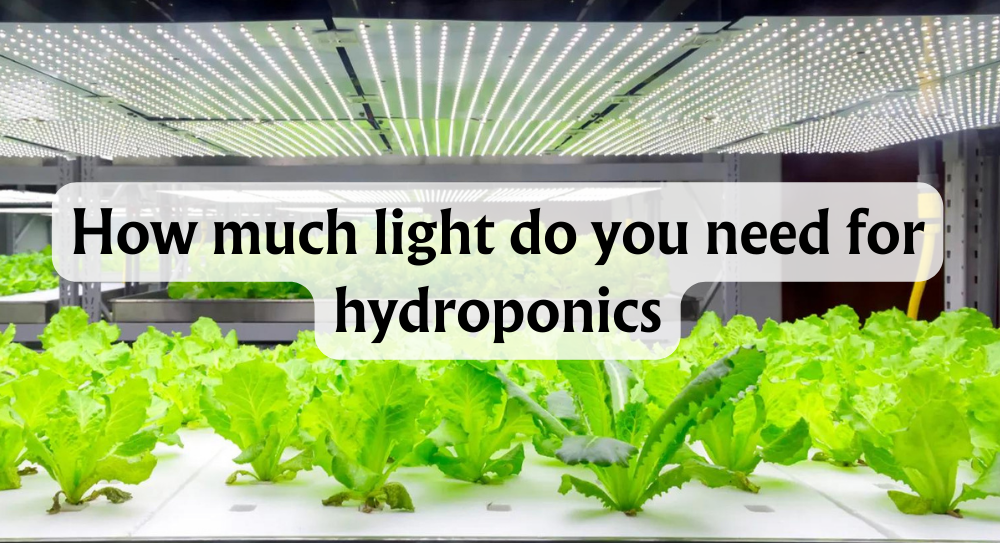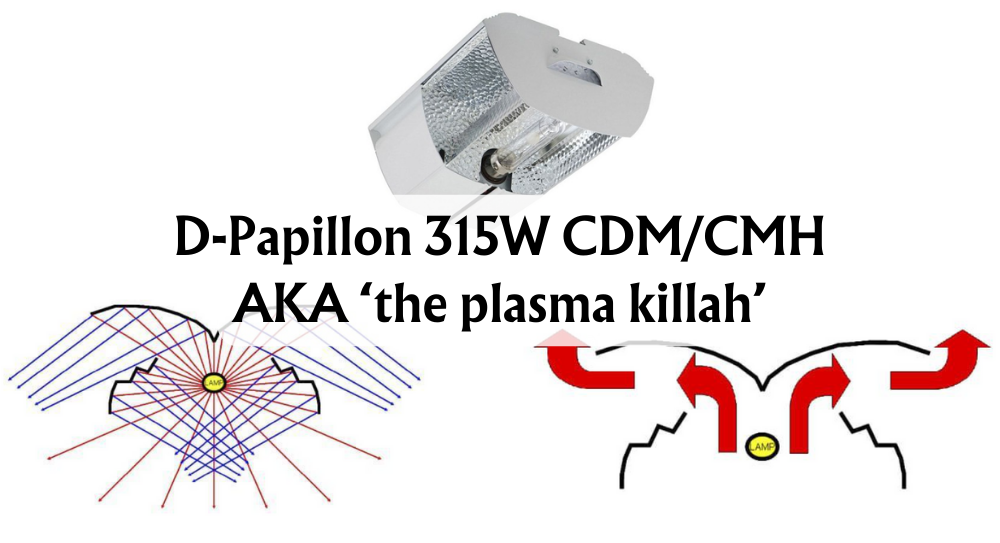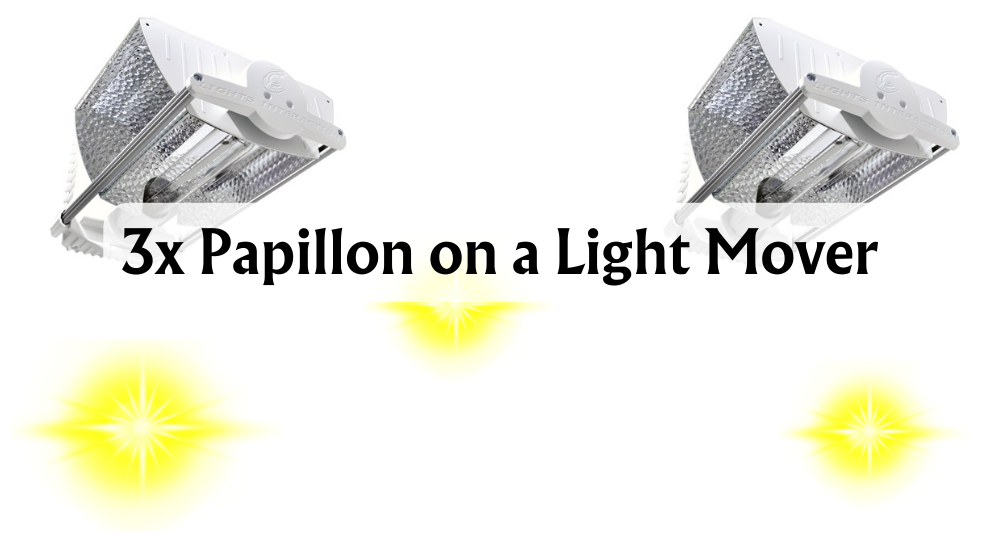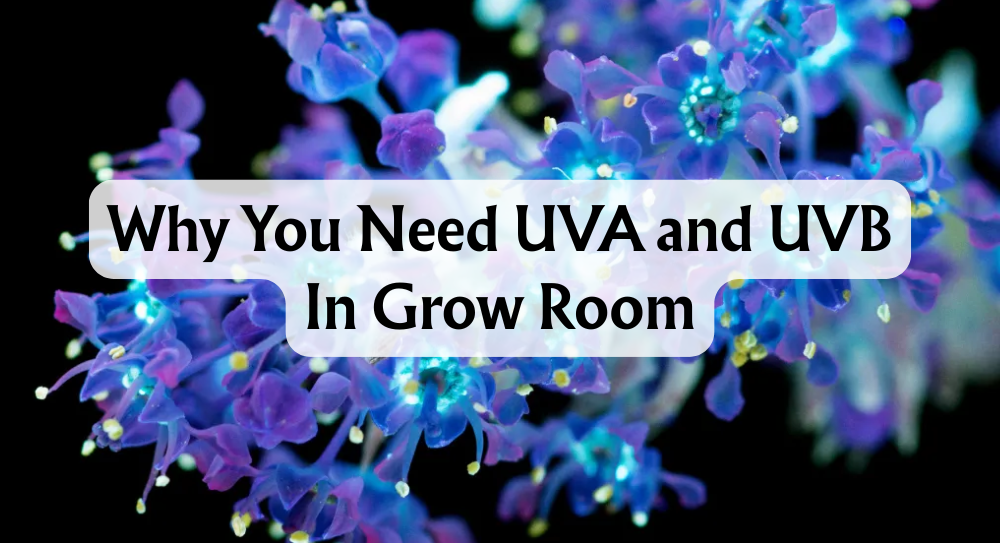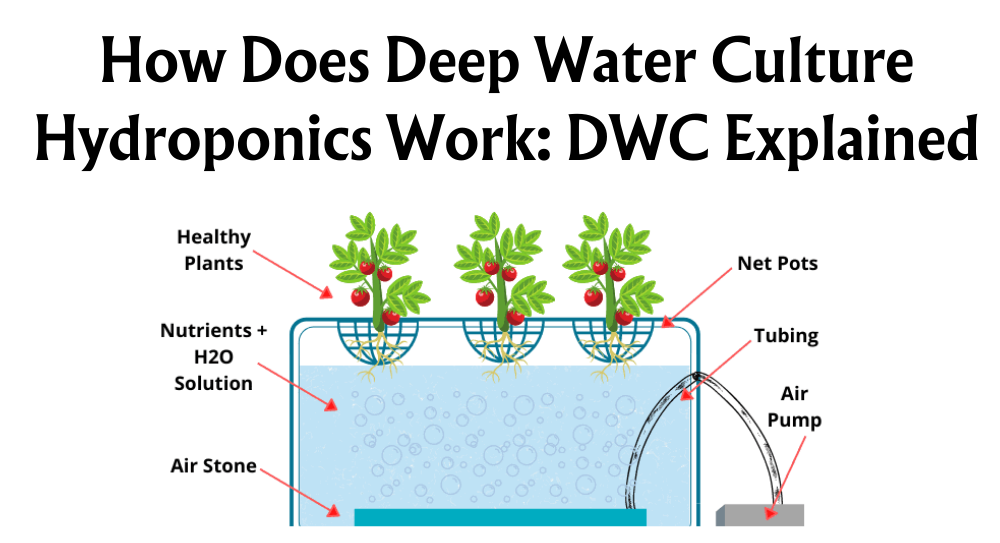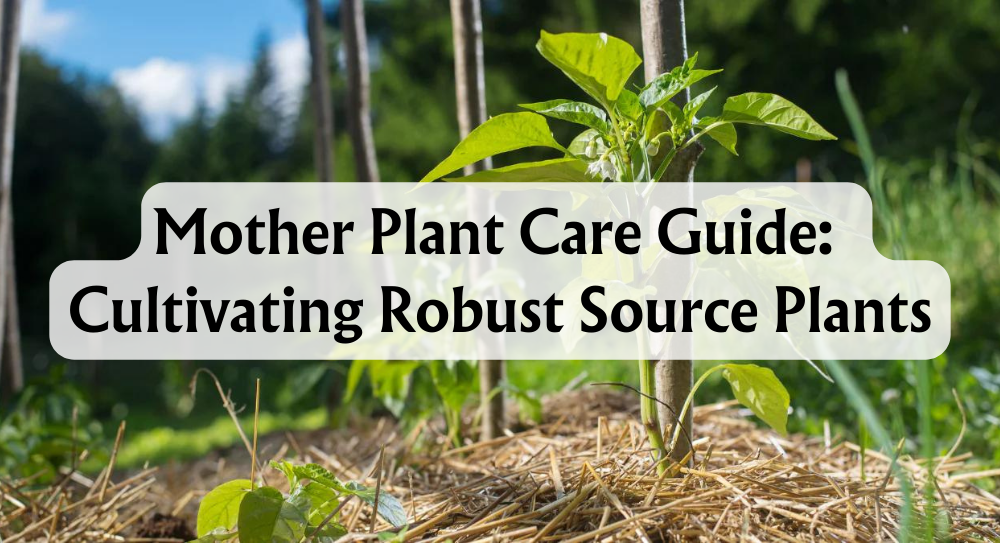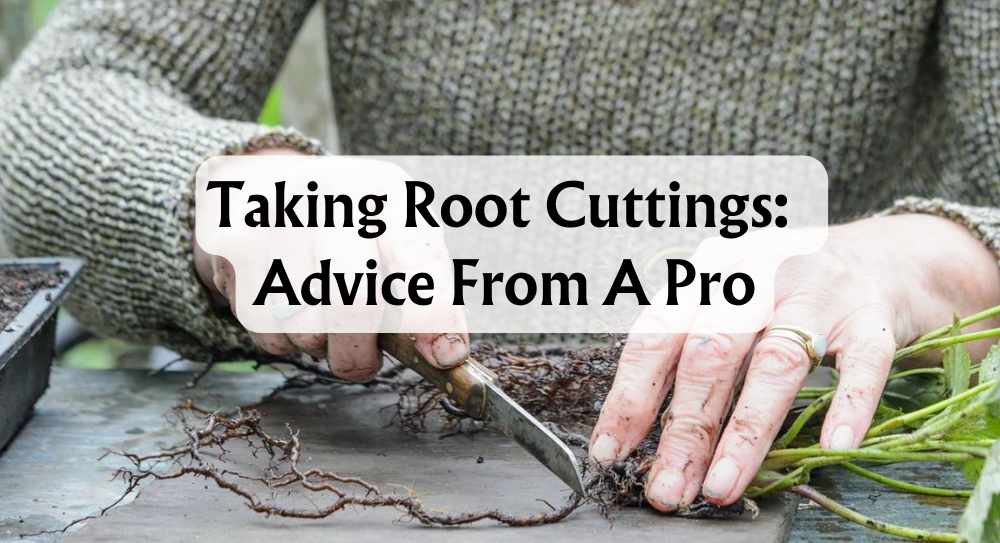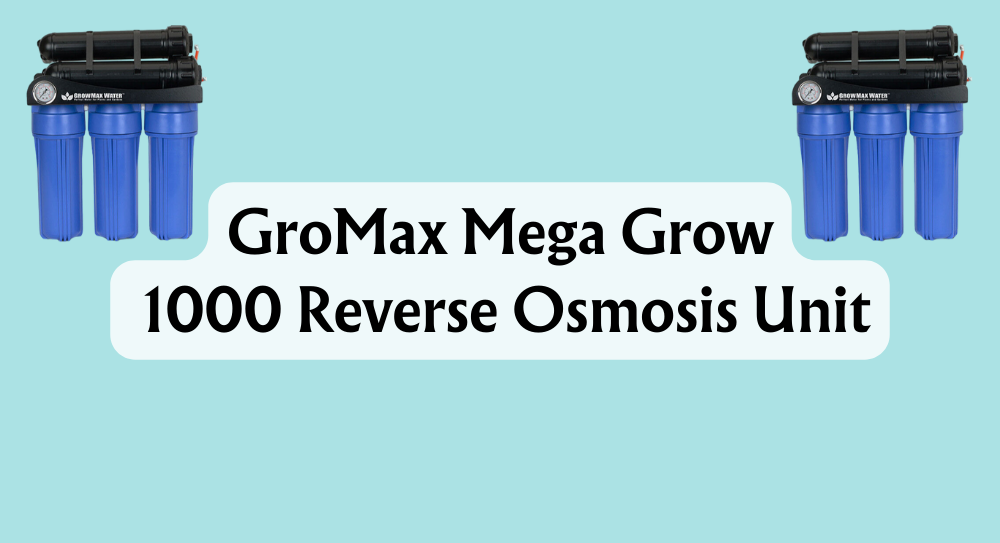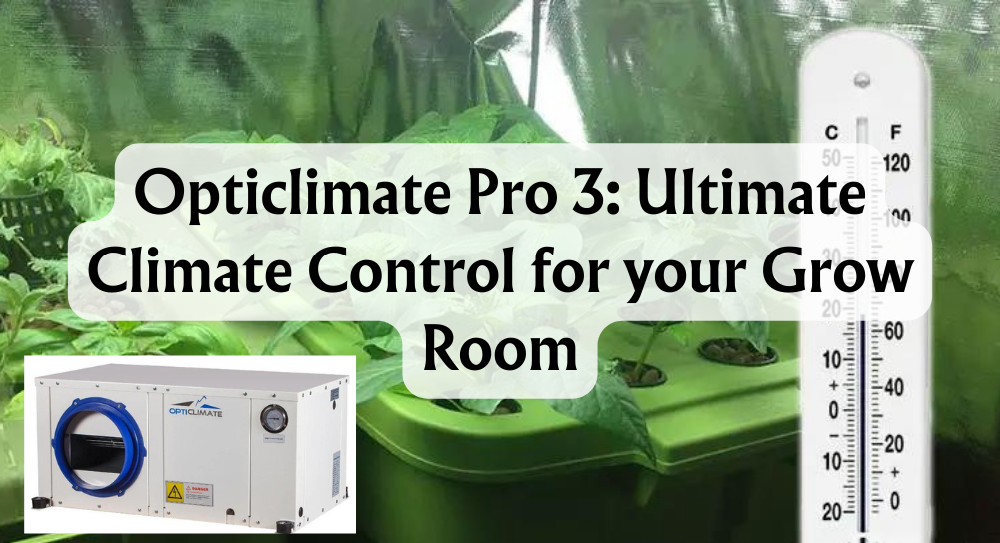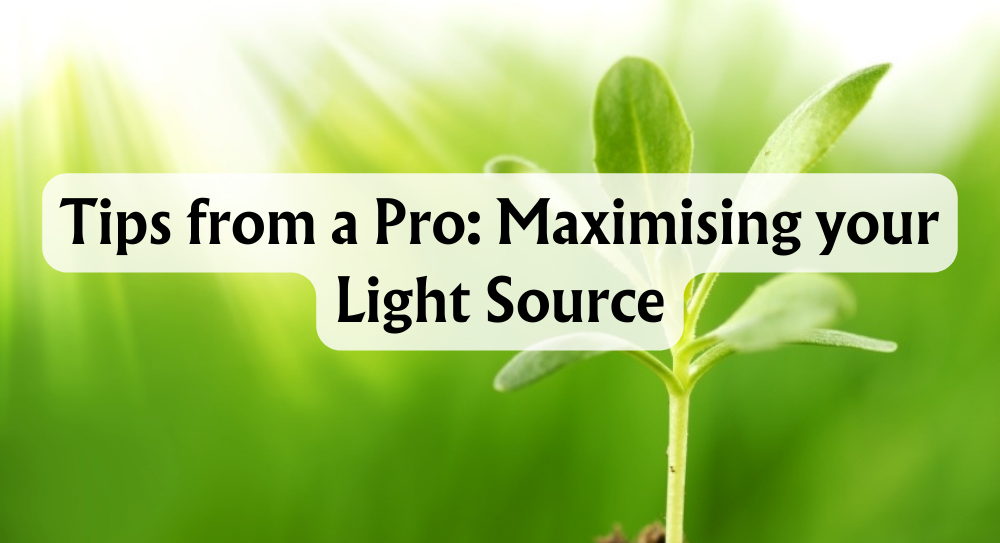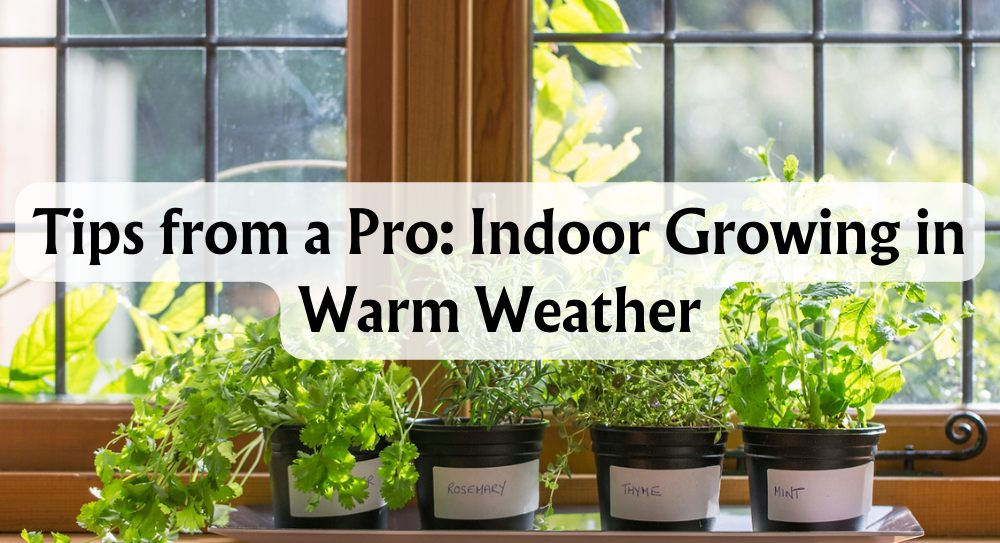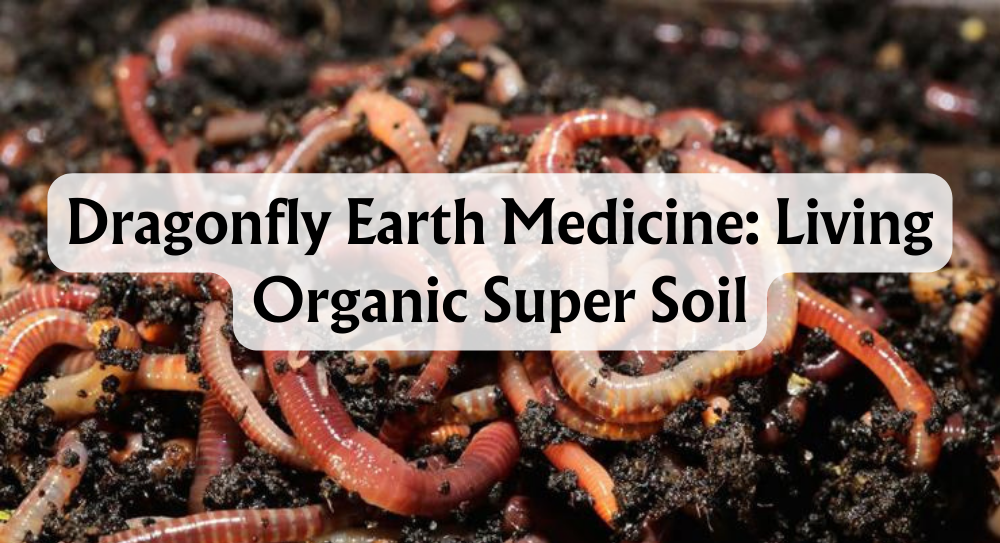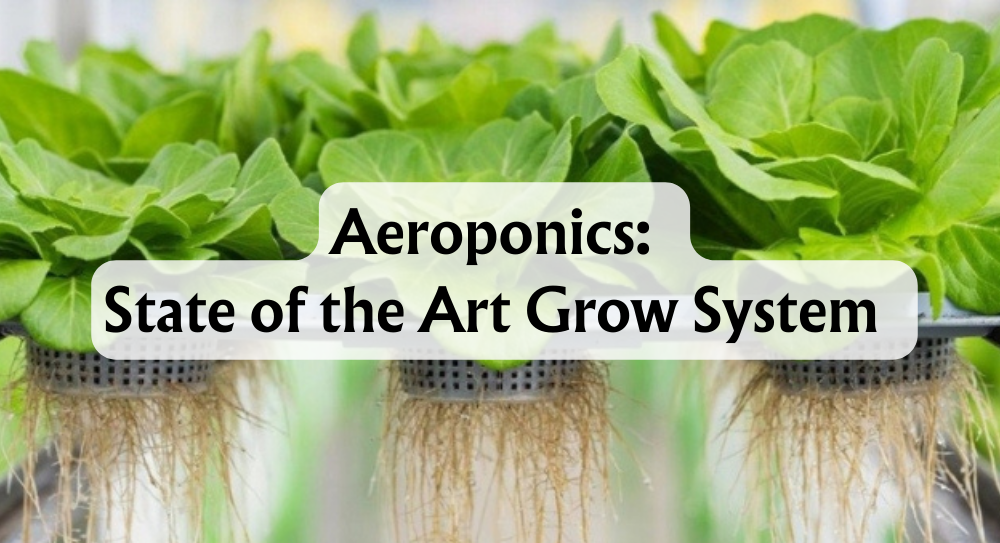How Much Light for Hydroponics?
When it comes to mastering hydroponic gardening, understanding the impact of lighting on our indoor garden is critical. Ever considered exactly how much light your hydroponic plants need to thrive? Just as humans need a balanced diet to stay healthy, our plants require the right amount of light to grow and produce. Indoor cultivation, where we control the very elements that our plants would traditionally seek from nature – lighting is perhaps the most important of these controlled conditions.
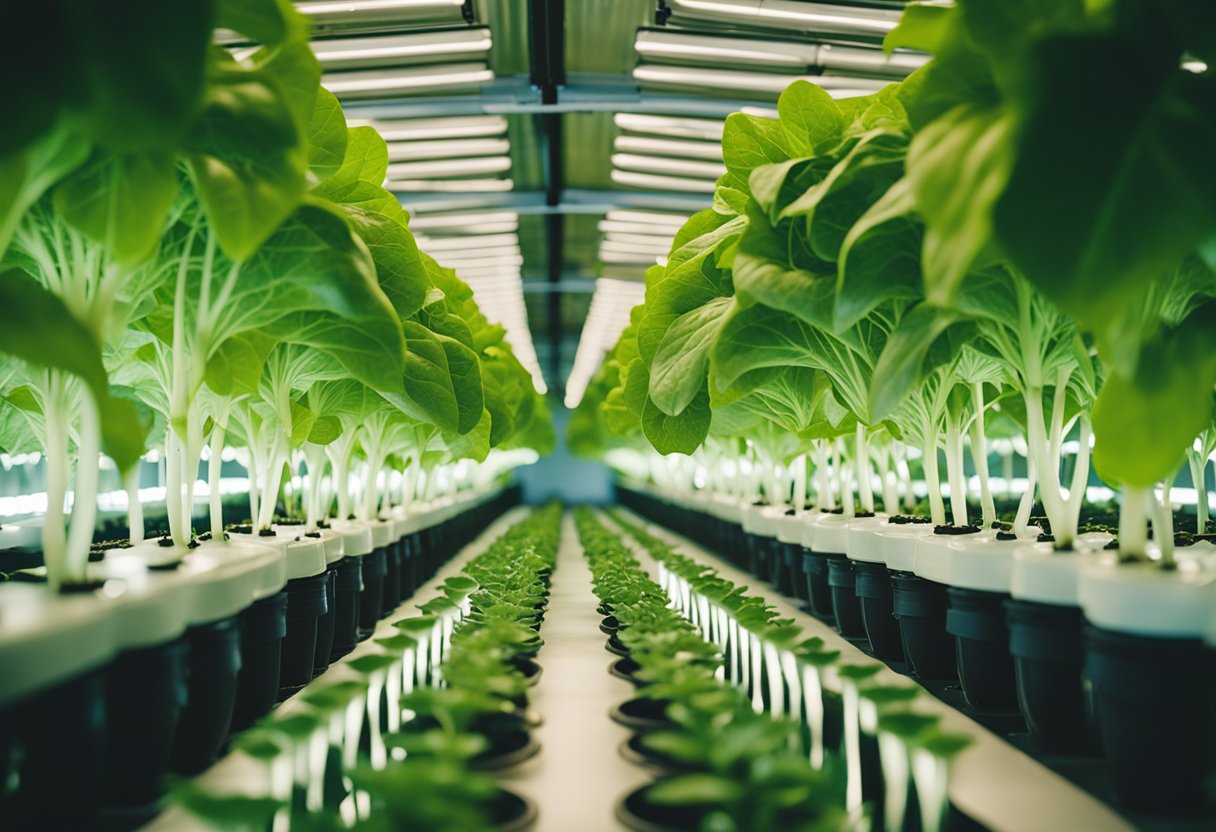
You're about to learn what hydroponic lighting is, delve into its crucial role in plant growth, and discover how to optimise your lighting system for different types of plants. With our collective experience in gardening, we've pieced together tips, tricks, and essential knowledge that will shed light (pun intended!) on creating the ideal environment for your hydroponic system.
Key Takeaways
- Proper hydroponic lighting is essential for successful indoor plant growth.
- The lighting system should be tailored to the specific needs of different plant types.
- A well-designed lighting setup can significantly enhance your hydroponic garden's yield and health.
What Is Hydroponic Lighting?

Hydroponic lighting is an ingenious method that allows us to create an artificial substitute for sunlight, which is essential for plant photosynthesis and growth. Why is it so important, you ask? Well, without it, our indoor greens wouldn't stand a chance of sprouting.
Types of Hydroponic Lighting Systems:
- LED Grow Lights: Highly energy-efficient and long-lasting, LEDs are the new kids on the block. They emit less heat and can be calibrated for different light spectrums.
- Fluorescent Lights: These are budget-friendly, produce minimal heat, and work great for herbs and lettuce but may not be suitable for larger plants.
- Metal Halide (MH) & High-Pressure Sodium (HPS) Lights: The old guard of hydroponics, these pack a punch in intensity, perfect for hungry bloomers. Be mindful, they can skyrocket your electricity bill!
- Ceramic Metal Halide (CDM) or Ceramic Discharge Metal Halide (CMH) Lights: Think of these as the improved cousins of MH and HPS, with better efficiency and a fuller light spectrum.
We're spoiled for choice, aren't we? But what suits best? If it's energy efficiency you're after, LEDs might light up your life. On a shoestring budget? Fluorescents might be your pal. For those heavyweight champion plants? Consider HPS or MH. And for those who want a bit of everything, CDMs/CMHs are the way to go.
In the end, it's all about wavelength and intensity. Our leafy friends love a particular light spectrum for photosynthesis, and the intensity dictates how well they'll flourish. Don't forget, it's a delicate dance of light and dark—the duration of lighting should generally be 14-16 hours, mimicking the natural day cycle.
Understanding Light Cycles
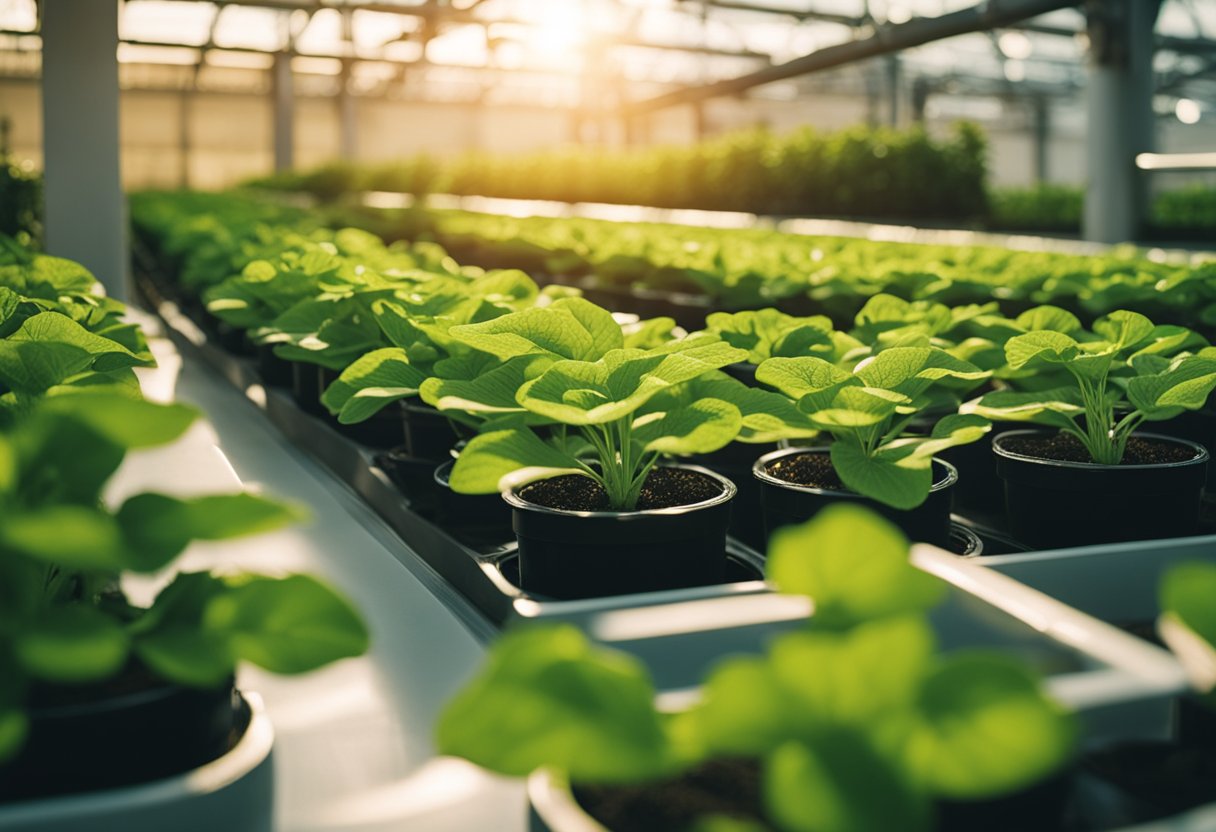
We must understand that light cycles—patterns of light and darkness—are critical for hydroponic plant growth. They influence not only growth speed but also the overall health and yield of our plants.
Vegetative and Flowering Stage Lighting
Vegetative Stage: During the vegetative stage, our plants need long periods of light to grow leaves and stems—think of this light as their food. A common light cycle for vegging plants is 18 hours of light and 6 hours of darkness (18/6). This mimics the long days of summer and encourages lush, healthy growth.
Blue light spectrum is particularly beneficial during the vegetative stage as it promotes tight internodal spacing—that's the bit between branches—leading to bushier plants. For this stage, we're looking at a high-intensity glow, kind of like the plant's very own indoor sunshine.
Flowering Stage: When our plants hit the flowering stage, they like a bit more rest with 12 hours of light and 12 hours of darkness (12/12). This echoes the shorter days of autumn, triggering them to bloom. If the plants are kept in constant light, or the dark periods are too short, they might not flower properly, and we wouldn't want that, would we?
Red light spectrum now becomes the star of the show, encouraging those lovely blooms. The light intensity may be lowered a tad, creating a sunset effect, which is ideal for flower development.
Manipulating and controlling the light cycle is simple with technology like timers and dimmers. With timers, we can set our lights to switch on and off at the same times each day, while dimmers let us adjust the intensity without startling our leafy friends.
Transitioning from one stage to the next? Planning is key. You've got to tweak your setup slowly. This can be done by gradually adjusting timers and checking on plant health regularly. Remember, it's like nurturing a baby—you wouldn't rush that, would you?
By strategically managing the vegetative and flowering stage lighting, we give our hydroponic plants the best chance to thrive. Keep an eye on them, make adjustments as needed, and you'll have a verdant oasis before you know it!
Sunlight Versus Artificial Lighting
Let's chat about sunlight and artificial lighting and perhaps which is better or worse, what are the pros and cons or either. After all, we want the best for our leafy friends!
Natural sunlight is the real deal, providing a full spectrum of light that contains all the colours of the rainbow, necessary for plant growth. It's what plants have evolved to use, and it's packed with what's known as photosynthetically active radiation (PAR), which is crucial for the photosynthesis process.
Now here's a twist: we can actually replicate natural light indoors! Artificial lighting systems, like LED and fluorescent lights, come to the rescue. An LED setup can be tailored to emit specific light spectra—think red or blue, or a mix of both, which can encourage certain growth stages in plants.
Here's a quick comparison:
| Natural Sunlight | Artificial Lighting |
|---|---|
| Full spectrum of visible light | Can be customised for various light spectrums |
| Free and abundant (weather permitting) | Costs for purchase and electricity |
| Comes with UV rays (can be pros and cons) | Generally lack UV rays unless designed to include them |
But hold on, it's not just about blue and red light. Plants need a rest too, so we've got to balance light and darkness—typically around 14 to 16 hours of light, followed by 10 to 12 hours of darkness for many species.
Remember, whether we opt for sunbathing our plants or giving them a dose of LED goodness, the goal is happy, healthy hydroponic greenery.
Optimising for Different Plant Types
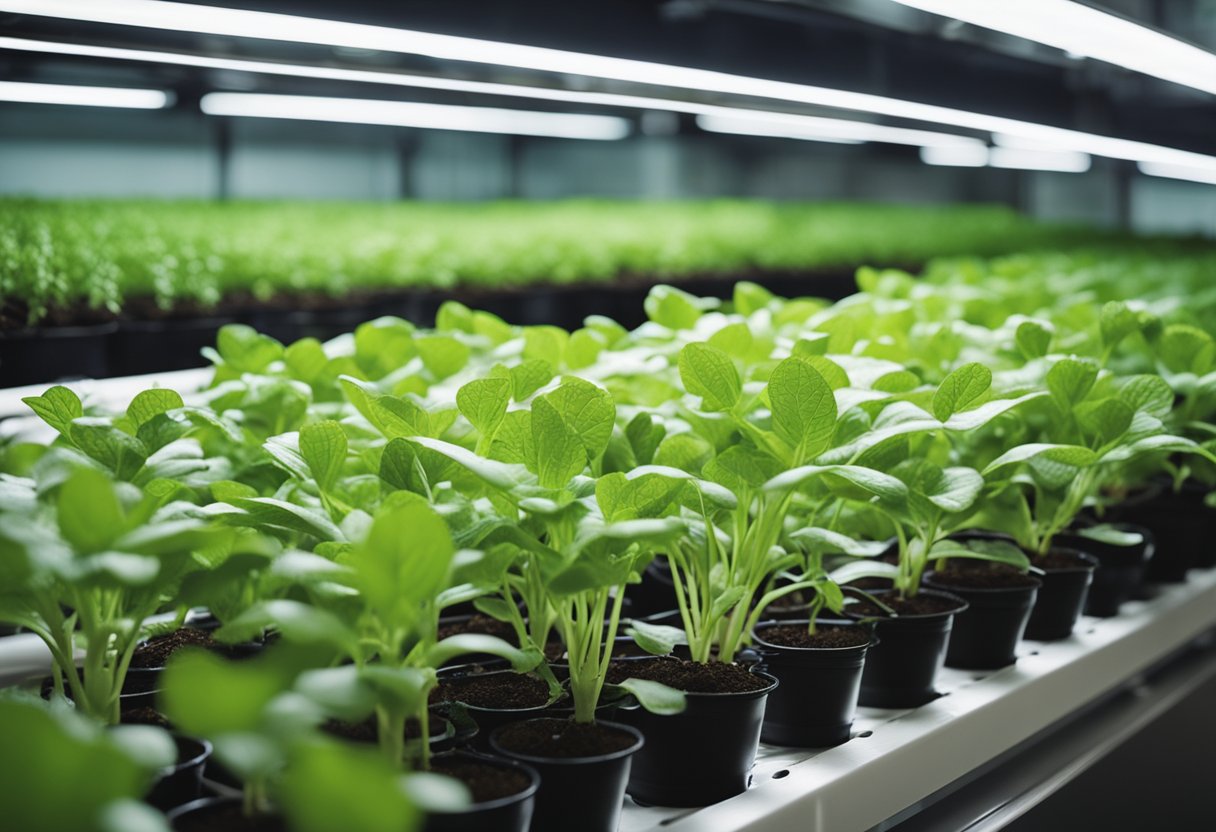
Ever been in that embarrassing situation where your lettuce is as pale as a ghost while your neighbour's is vibrant green? It's all about getting the lighting right, folks. Plants are a bit like us; they have their own preferences. The secret sauce? The ability to provide sufficient light.
Light Needs by Plant Type
- Lettuce & Leafy Greens: These chaps love light, but not too intense. Around 100-200 lux should do it. They favour a blue spectrum to thrive in their vegetative stage.
- Tomatoes & Peppers: A bit more demanding, these plants need stronger light, think 400-600 lux. They enjoy a balanced spectrum with both blue and red, catering to both leafy growth and fruiting.
- Herbs: A mixed bag here, but generally, they're quite happy with moderate light intensity similar to lettuce.
Spectrum, Intensity, and Duration
Spectrum: Get this — plants use specific light spectrums to grow. Blue light, around 400-500 nm, encourages vegetative growth, perfect for those leafy greens. Red light, in the neighbourhood of 600-700 nm, helps flowering and fruiting plants like our friend the tomato.
Intensity: This is measured in lux, and more isn't always better. If you're raising delicate herbs, you don't want to blast them with light fit for a tomato plant, right?
Duration: Some plants prefer long daylight hours; others are more laid-back. Our leafy greens typically enjoy a long day, while fruiting plants need appropriate periods of darkness to trigger their natural processes.
Lighting Setups
Ah, the tech stuff. Full-spectrum LEDs are splendid; they mimic natural sunlight and cater to all plant types. But why not get fancy and mix things up? Combine warm lights with cool ones, match your plants’ needs, and voilà, you'll be the talk of the town... or at least your plants will.
Tips and tricks:
- Position your bulbs about 30-60 cm above the plants — just right so they don't get sunburned.
- Adjust the light intensity according to plant type. Start low and increase as needed.
- Timing is key. Use a timer to simulate natural day-night cycles.
That’s our quick guide to lighting in the hydroponic world. Match the light to the plant, and you’re golden.
Components of a Lighting System
When setting up a hydroponic system, we must get the lighting requirements right, as it's a key driver of plant growth. We'll cover the important components that'll need to slot together like pieces of a puzzle to create the ideal environment for our hydroponic garden.
Bulbs and LEDs
Bulbs are at the heart of any lighting system. There are several types, like High-Intensity Discharge (HID) bulbs which include Metal Halide (MH) for vegging plants and High-Pressure Sodium (HPS) for blooming. Then there are the popular Light light-emitting diodes (LEDs), known for their energy efficiency and long lifespan. Here are the specifics:
- E27, E40, GU10, and E14 lamps
- LEDs with a wide range of wavelengths and colour temperatures
Spectrum and Intensity
The spectrum of light influences plant growth, flowering, and fruiting, while light intensity can affect overall plant health. This means we should provide a full spectrum for most stages of growth and tailor the intensity to our plants' needs. Check these out:
- Opt for LEDs between 3000-4000K colour temperature.
- Aim for a balance since too much intensity can harm plants just as less can weaken them.
Efficiency and Heat Management
We can't just crank up the lights and forget about them; we've got to manage heat and cooling to avoid cooking our plants and wasting money. Reflectors, such as Euro or Adjust-A-Wings, and ballasts, which come in magnetic, digital, and electronic forms, help regulate power and distribute light evenly. Keep in mind:
- Match your lamp's wattage with the ballast for efficiency.
- Use air-cooled reflectors to manage heat, keeping your setup cool.
Remember, to adjust the height and distance of the lights from the plants – it's not just about plugging in and switching on. A bit of tweaking goes a long way!
Designing Your Hydroponic Lighting System
So, you've decided to hop onto the hydroponic gardening wagon — brilliant choice! Let's get you sorted with a lighting system that's spot-on for your plants. Navigating the world of hydroponics can be tricky, but fear not; we're in this together.
First off, grow light coverage is crucial. Think about your grow space — every square foot is precious, right? To keep your plants basking in artificial sunshine, target about 2000-4000 lumens per square foot. That's the sweet spot for bright, happy plants.
Now, onto watts. If you’re scratching your head over how many are needed, here’s a cheeky tip: It's not just about quantity; it's about quality too. Too many watts and you might just dry out your crops! Strike a balance, and as a baseline, look for energy-efficient options like LED or HID lights. They're not only better for your bills, but they're kinder to the environment as well.
Positioning is next. You don't want to scorch your greens, so place the lights about 12-24 inches above your plants for the best distance. Not too close, not too far, just right — just like Goldilocks, eh?
What about timing? We're all about that consistent light cycle. Aim for 14-16 hours per day for veggie stages, and about 10-12 hours of light per day for flowering.
Here’s a quick rundown for easy reference:
- Coverage: 2000-4000 lumens/sq ft
- Light Distance: 12-24 inches above plants
- Lighting Period:
- Vegetative stage: 14-16 hours/day
- Flowering stage: 10-12 hours/day
And here's a bright idea — use a timer! It'll automate your light cycles, making your life easier and keeping your leafy friends on schedule.
By factoring in these key aspects, we create a lighting system for our hydroponic setup that's efficient, cost-effective, and just perfect for our plant pals. Now, let's shine some light on those hydroponic dreams of ours!
Technical Insights and Best Practices
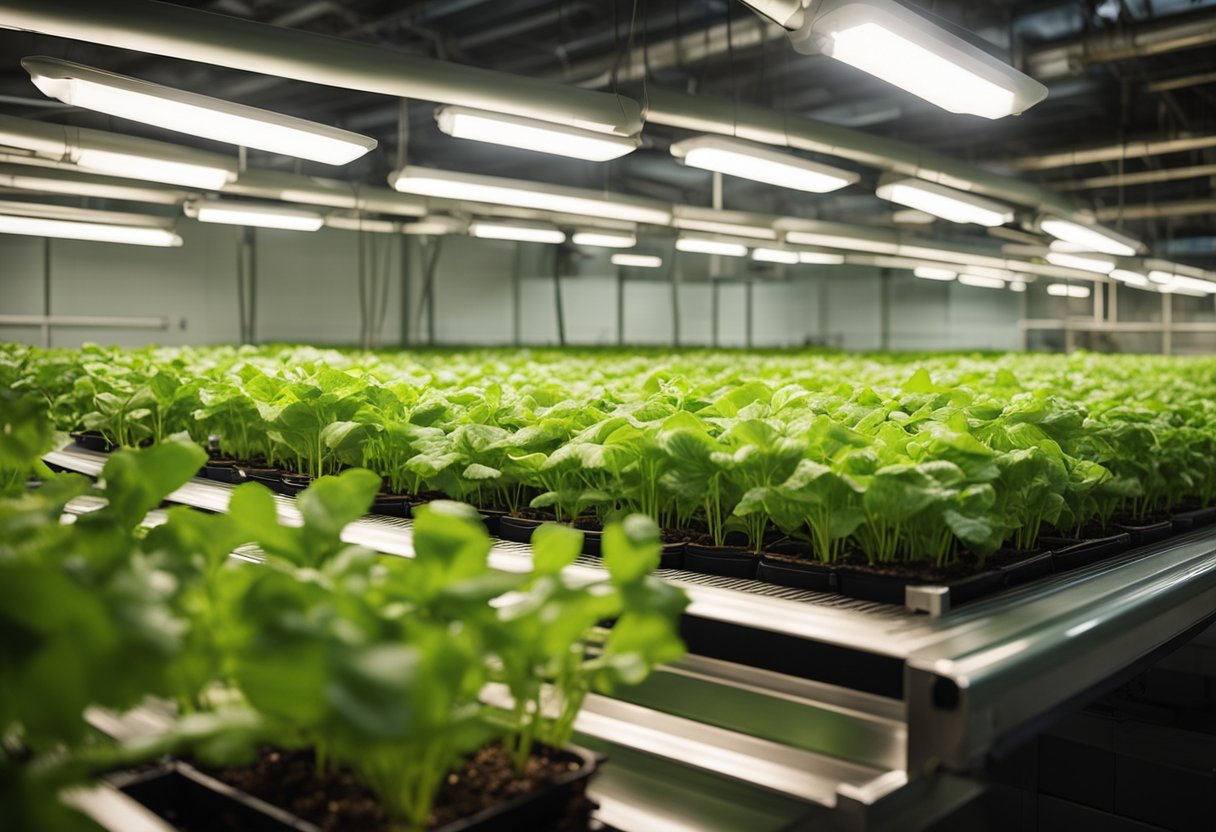
Let's get technical, shall we? When it comes to hydroponics, the light source can make or break our plant's potential. But where do we begin in this when it comes to hydroponic grow lights?
First off, lumens are a big deal—they measure the light's brightness visible to our human eyes, but plants see things differently. They feast on a buffet of light in the range of 400–700 nanometers (nm) for photosynthesis, often called Photosynthetically Active Radiation (PAR). So, we should be eyeing lights that serve up the proper spectral feast for our leafy pals.
Different types of grow lights serve unique purposes:
- High-intensity discharge (HID) lights, which include Metal Halide (MH) and High-Pressure Sodium (HPS), are like the big kahunas of grow lights. They pack a punch in terms of intensity and light penetration, crucial for big, bountiful yields but beware; they can be hefty on the energy bill.
- LEDs are the new kids on the block, offering a dazzling energy efficiency performance. They might cost more upfront, but they'll make your wallet happier in the long run with lower energy costs.
Here's a tip-top tip: Maintaining an optimal distance between lights and plants is vital. For most setups, starting around 30 centimetres (12 inches) above the plants is recommended. Watch how the plants respond; they'll tell you if they need more personal space or want the lights closer to their growth patterns.
Now, let's not forget the tech-lifesaver, the lighting schedule! Consistency is key – establish a lighting schedule to mimic Mother Nature’s day and night. This simple routine can vastly improve growth and yield without overtaxing your plants with too much of a good thing.
So, let’s wrap up this enlightening session with a commitment to balance in our indoor gardens or greenhouses. Proper light, be it from HID, LED, or another reliable source, paired with the right schedule and intensity, will get us to the hydroponic harvests we're dreaming of!
Conclusion
When we dive into the world of hydroponics, lighting isn't just a detail—it's a cornerstone for plant success. Let's wrap our heads around the essentials we've learned:
-
Photosynthesis: It’s the lifeline of our plants, and without the right light, it’s a no-go. Remember, chlorophyll in the plant absorbs light to turn nutrients into yummy plant food.
-
Types of Hydroponic Lighting: From fluorescents to LEDs, each option brings something special to the table. It's like finding the perfect pair of gloves; it must fit our plants' needs perfectly.
-
Seedling Stage: Young plants are like toddlers, they need the right amount to flourish—typically 2000-3000 lumens per square foot.
-
Healthy Growth: For most plants, targeting between 2000-4000 lumens per square foot allows them to grow healthy.
-
Spectrum Specifics: Fancy a bushy plant? Blue light is your friend for vegging out. Dreaming of blooms? Red light helps transition our leafy pals to flower power mode.
-
Day-Length Consideration: Those long-day plants are the high-achievers of the plant world, thirsting for more of those bright rays.
We don’t need to be bogged down in complex jargon to understand that the right type of light equates to plant delight. Seedlings to blooming beauties, they all yearn for those lumens in just the right amounts. So, whether it's snugly blue wavelengths or the warm embrace of red, strategic lighting leads to bountiful, healthy growth. Remember, it's not just about giving our green friends a glow; it's about tailoring the lumens and spectrum for the ideal quality of light.

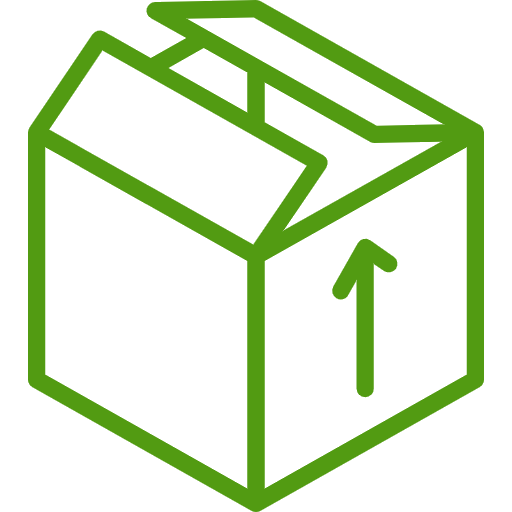





 Store Locator
Store Locator
